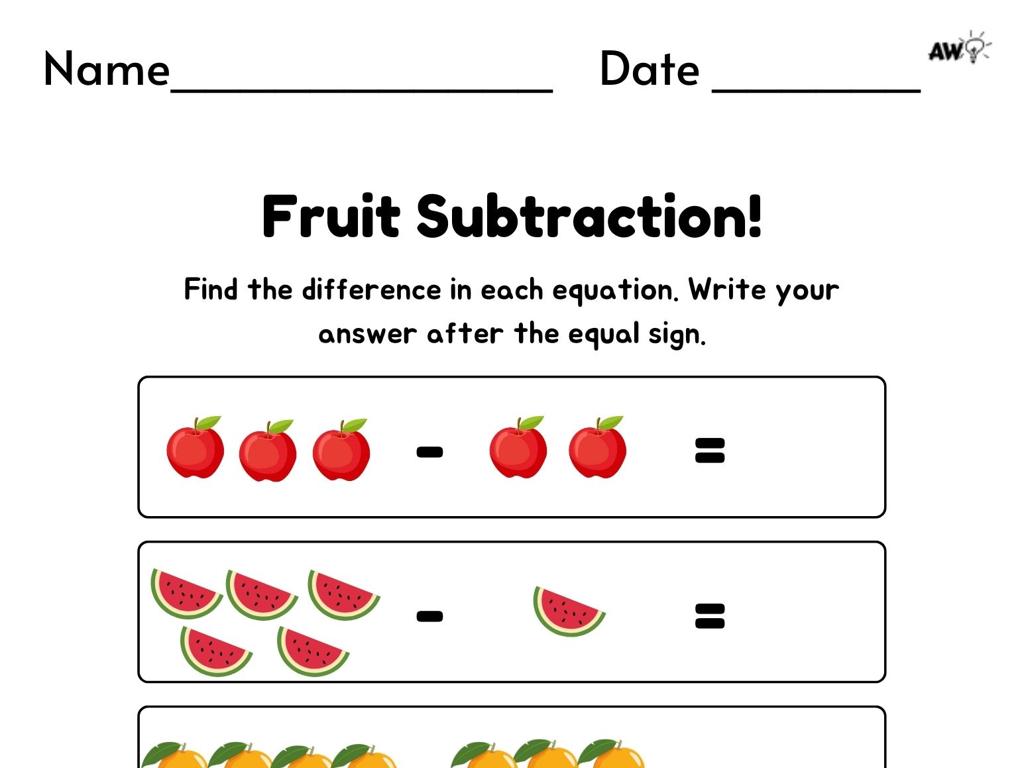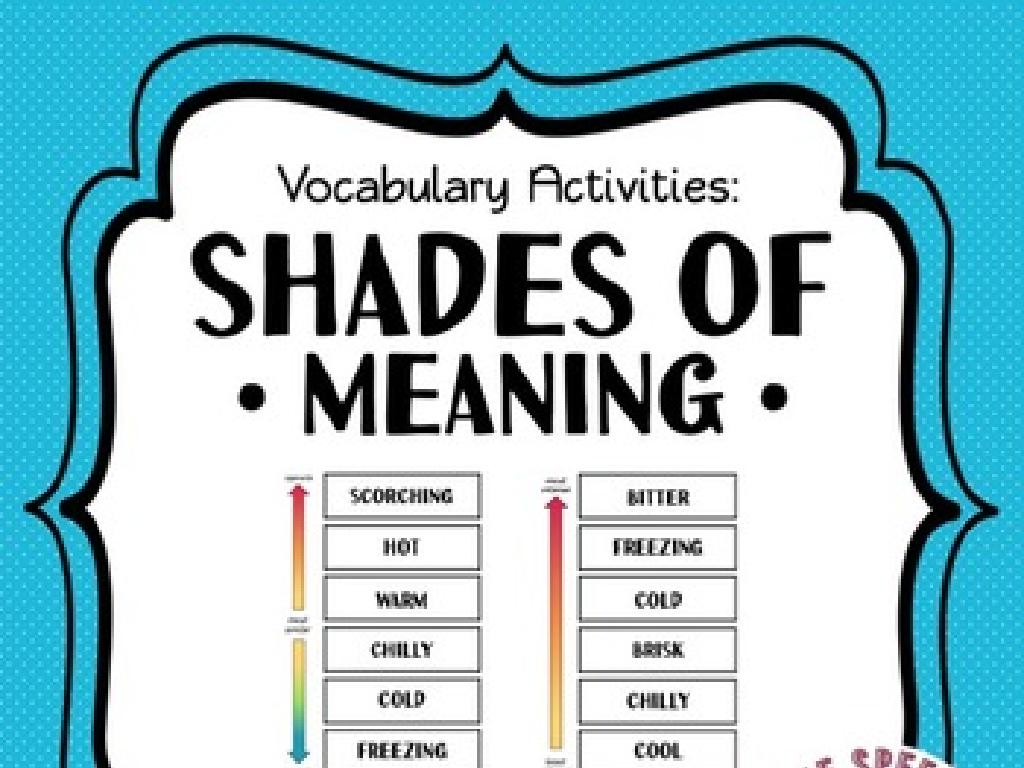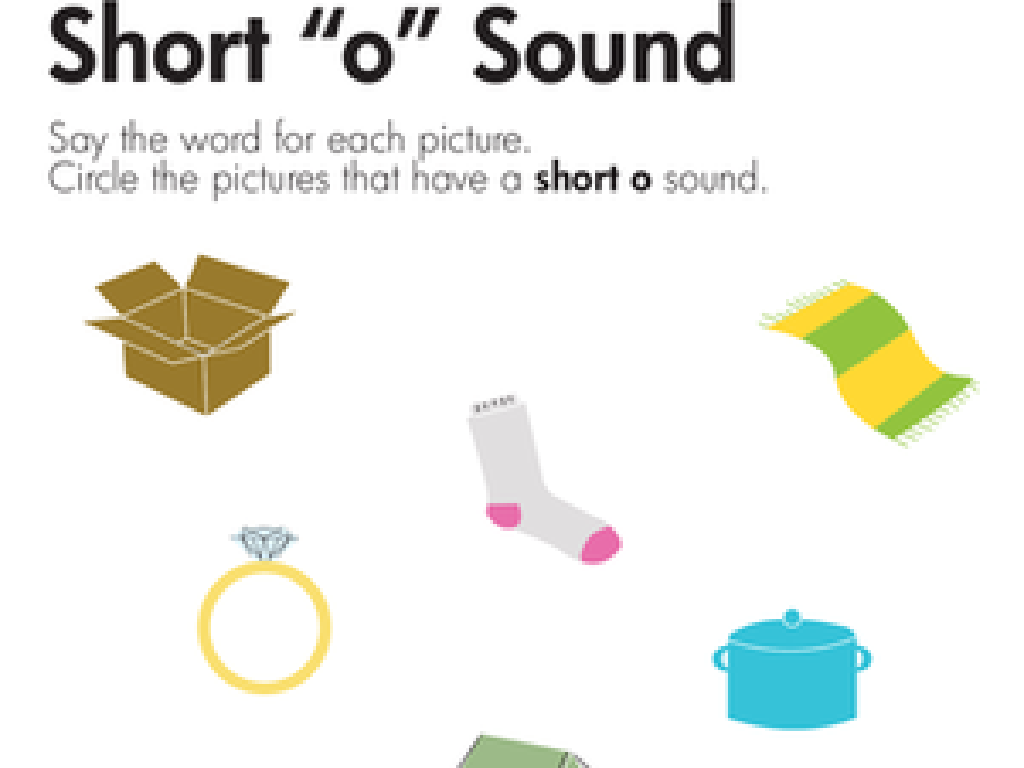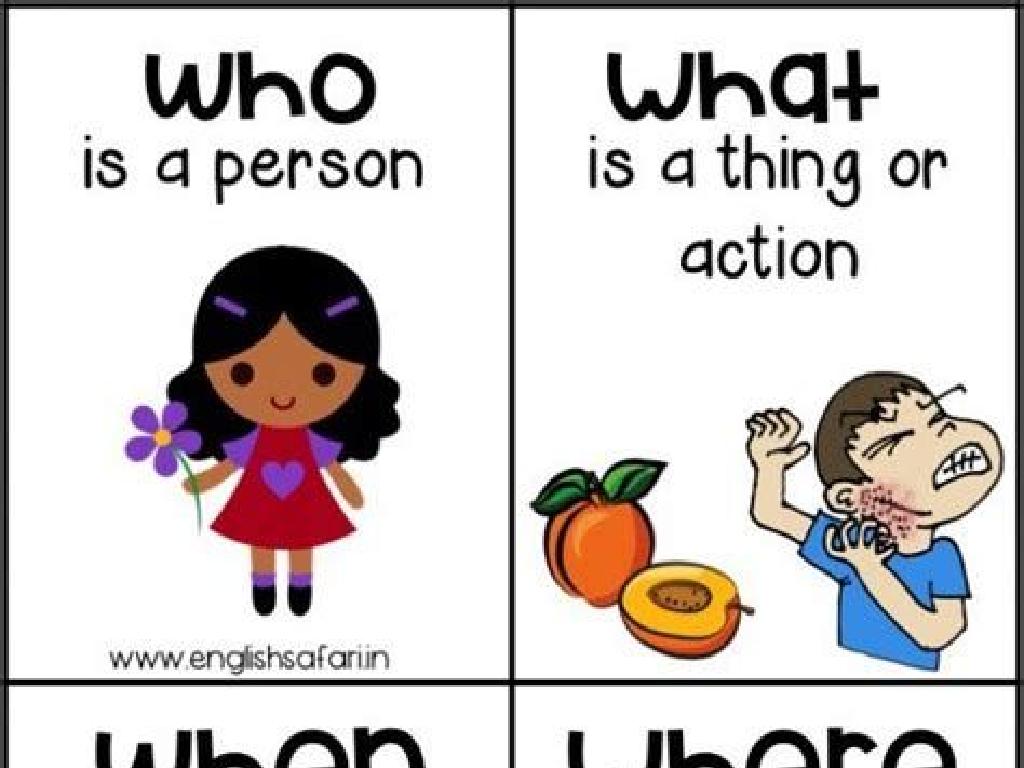Multiplication And Division Sentences Up To 12: True Or False?
Subject: Math
Grade: Third grade
Topic: Mixed Operations: Multiplication And Division
Please LOG IN to download the presentation. Access is available to registered users only.
View More Content
Exploring Multiplication & Division Sentences
– Learn to create multiplication sentences
– Multiplication combines equal groups, like 3 groups of 4 is 3 x 4
– Learn to create division sentences
– Division splits into equal groups, like 12 ÷ 4 is splitting 12 into 4 groups
– Solve sentences to find answers
– Use multiplication and division to solve problems
– Determine if sentences are true or false
– After solving, decide if the sentence correctly matches the answer
|
This slide introduces third graders to the concept of creating and solving multiplication and division sentences. Emphasize the idea of grouping in multiplication and sharing equally in division. Provide examples and guide students through the process of solving these sentences. Then, teach them how to check their answers and understand the truth value of each sentence. Encourage students to practice with different numbers up to 12 and verify their solutions. This will help them build a strong foundation in understanding mixed operations and prepare them for more complex math concepts.
Understanding Multiplication
– Multiplication: repeated addition
– It’s like adding 4 three times: 4 + 4 + 4
– Example: 3 x 4 as addition
– 3 x 4 means 4 + 4 + 4, which equals 12
– Multiplication speeds up adding
– Instead of adding 4 three times, we can just multiply 3 by 4
– Practice with true or false
|
This slide introduces the concept of multiplication as a form of repeated addition, which is a foundational skill in mathematics for third graders. Start by explaining that multiplication is a shortcut for adding the same number multiple times. Use the example 3 x 4 to show how it’s the same as adding 4 three times. Emphasize that multiplication makes addition faster and more efficient. To reinforce learning, engage students with true or false questions about multiplication sentences, such as ‘Is 3 x 4 the same as adding 4 three times?’ This interactive approach helps solidify their understanding of multiplication as repeated addition.
Understanding Division
– Division means sharing equally
– Think of division as fair sharing among friends
– Example: 12 ÷ 4 (sharing cookies)
– If we have 12 cookies and 4 friends, how do we share?
– Each group gets 3 cookies
– 12 cookies divided by 4 friends is 3 cookies each
– Division creates equal groups
|
This slide introduces the concept of division to third-grade students by relating it to the idea of sharing equally, which is a familiar concept at this age. Use the example of sharing cookies to make the idea of division concrete and relatable. Explain that division is the operation we use when we want to split something into equal parts. Emphasize that in the example, 12 cookies are divided into 4 equal groups, and each group ends up with 3 cookies. This demonstrates that division is about making sure each group gets the same amount. Encourage students to think of other scenarios where they might need to divide equally, such as sharing crayons or stickers.
Creating Multiplication Sentences
– Understand rows and columns
– Example: 3 rows of 4
– 3 x 4 represents 3 groups of 4 items
– Multiplication makes counting quick
– Instead of counting 1 by 1, we multiply
– Practice with different numbers
– Try creating sentences using 5×2, 6×3, etc.
|
This slide introduces students to the concept of multiplication as a method to count objects arranged in rows and columns quickly. Start by explaining that multiplication is like adding the same number multiple times. Show them how to visualize this with rows and columns, using the example of 3 rows of 4 objects to illustrate 3 x 4. Emphasize that multiplication is a shortcut for addition when dealing with multiple groups of the same size. Encourage students to practice by creating their own multiplication sentences with different numbers, reinforcing the concept with hands-on activities like grouping objects or drawing arrays.
Creating Division Sentences
– Understanding division sentences
– How to make equal groups
– Division creates equal-sized groups
– Example: 12 apples into 4 groups
– 12 ÷ 4 means making 4 groups of apples
– Each group has equal apples
– Ensures fairness in distribution
|
This slide is aimed at helping third-grade students understand the concept of division as making equal groups. Start by explaining that division is a way to divide things into equal parts or groups. Use tangible examples, like dividing apples, to make the concept relatable. Show them that 12 ÷ 4 means they want to make 4 equal groups out of 12 items. Emphasize that each group must have the same number of items to be fair. Encourage students to think of other scenarios where they might need to divide things equally, such as sharing snacks or toys with friends.
True or False: Multiplication & Division Sentences
– Understanding true sentences
– A true sentence has correct math, like 3 x 4 = 12.
– Recognizing false sentences
– A false sentence has a mistake, such as 8 / 2 = 5.
– Checking math for accuracy
– Use multiplication and division to check if sentences are true.
– Practice with true or false
– We’ll solve problems to see if they’re true or false.
|
This slide introduces the concept of verifying the accuracy of multiplication and division sentences. Explain that a true sentence means the math calculation is correct, while a false sentence indicates there is an error. Emphasize the importance of checking work to determine the truthfulness of a math sentence. Provide examples of both true and false sentences and guide students through the process of checking them. Encourage students to practice with a variety of problems to build their confidence in identifying true and false math sentences. This will help them understand the concept of mathematical accuracy and the value of double-checking their work.
Let’s Practice Multiplication and Division!
– Is 4 x 3 = 12 true?
– Yes, because 4 groups of 3 equals 12
– Is 15 ÷ 5 = 2 true?
– No, because 15 divided by 5 equals 3
– Solving multiplication sentences
– Solving division sentences
|
This slide is an interactive class activity designed to help students practice and verify the truthfulness of multiplication and division sentences. Start by solving the first sentence together, demonstrating that 4 groups of 3 indeed equal 12, reinforcing the concept of multiplication as repeated addition. Then, address the division sentence by dividing 15 into 5 equal groups, showing that the result is 3, not 2, thus the sentence is false. Encourage students to use objects like counters or draw pictures to visualize the problems. For the activity, have students work in pairs or small groups to create their own true or false multiplication and division sentences. They can use flashcards, number lines, or arrays to assist them. Rotate around the room to guide and check for understanding.
Class Activity: True or False Game
– Split into teams for a math challenge
– Solve multiplication & division sentences
– Decide if each sentence is true or false
– Team with most correct answers wins!
|
This interactive class activity is designed to encourage teamwork and reinforce the understanding of multiplication and division sentences. Divide the class into small groups and provide each team with a set of multiplication and division sentences up to 12. Each team will work together to solve the problems and determine whether each sentence is true or false. After solving, teams will present their answers, and the teacher will verify them. The team with the most correct answers will be declared the winner. This game not only makes learning fun but also promotes collaborative problem-solving skills. Possible variations of the activity could include timed rounds, bonus questions for extra points, or having teams create their own true or false questions for others to solve.
Celebrating Our Math Stars!
– Congratulations on learning!
– Keep practicing your skills
– Practice makes perfect, try daily problems
– You are all math stars!
– True or false mastery
– Can you spot if a sentence is true or false?
|
This slide is meant to congratulate the students on their hard work learning multiplication and division sentences. It’s important to encourage them to continue practicing these skills to become even more proficient. Remind them that being good at math is like being a star in the sky; it takes time and effort to shine brightly. To reinforce their learning, you can suggest they practice with true or false questions at home, perhaps turning it into a game where they earn ‘star points’ for each correct answer. This will help them to not only remember the concepts but also to apply them in different scenarios.





